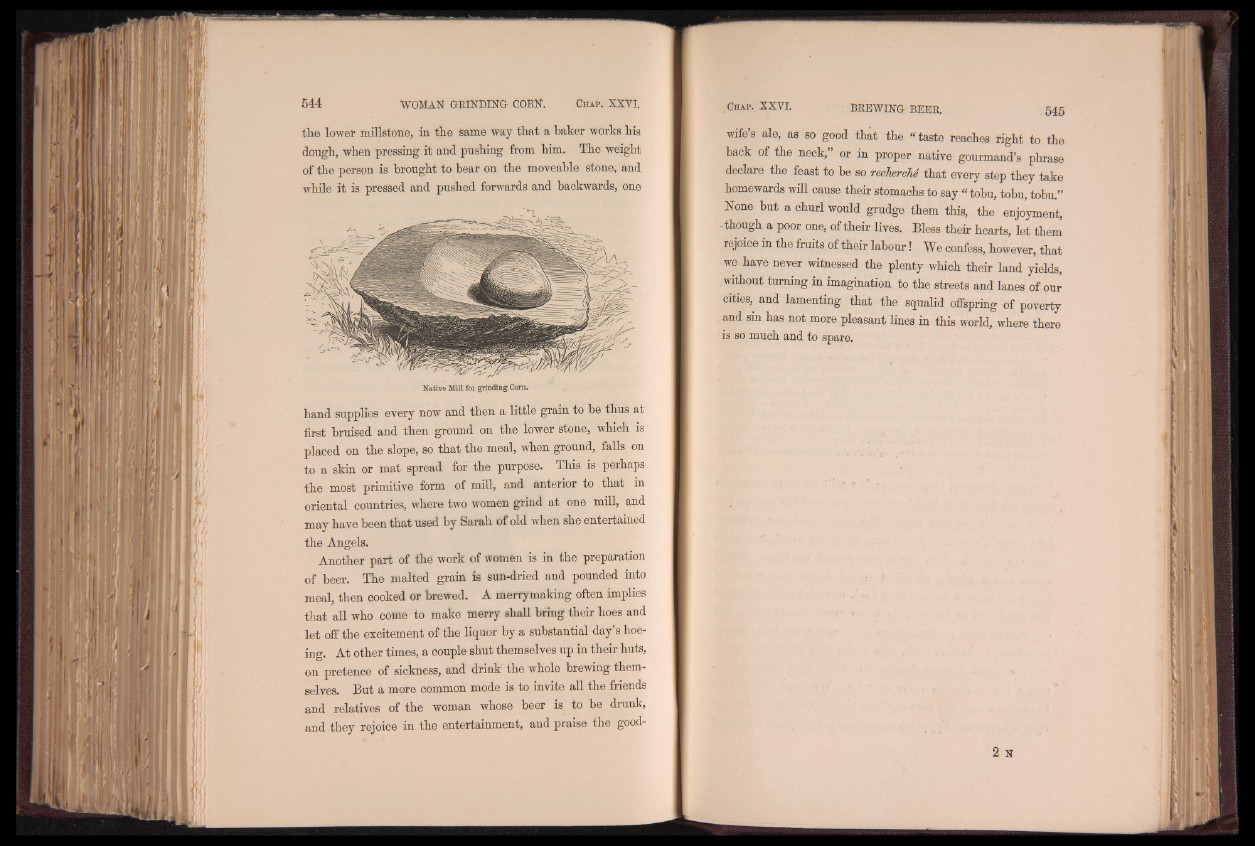
the lower millstone, in the same way that a baker works his
dough, when pressing it and pushing from him. The weight
of the person is brought to bear on the moveable stone, and
while it is pressed and pushed forwards and backwards, one
Native Mill foi grinding Corn.
hand supplies every now and then a little grain to he thus at
first bruised and then ground on the lower stone, which is
placed on the slope, so that the meal, when ground, falls on
to a skin or mat spread for the purpose. This is perhaps
the most primitive form of mill, and anterior to that in
oriental countries, where two women grind at one mill, and
may have been that used by Sarah of old when she entertained
the Angels.
Another part of thé work of Women is in the preparation
of beer. The malted grain is sun-dried and pounded into
meal, then cooked or brewed. A merrymaking often implies
that all who corné to make merry shall bring then- hoes and
let off the excitement of the liquor by a substantial day’s hoeing.
At other times, a couple shut themselves up in their huts,
on pretence of sickness, and drink the whole brewing themselves.
But a more common mode is to invite all the friends
and relatives of the woman whose beer is to be drunk,
and they rejoice in the entertainment, and praise the goodwife’s
ale, as so good that the “ taste reaches right to the
back of the neck,” or in proper native gourmand’s phrase
declare the feast to be so recherchi that every step they take
homewards will cause their stomachs to say “ tobu, tobu, tobu.”
None but a churl would grudge them this, the enjoyment,
• though a poor one, of their lives. Bless their hearts, let them
rejoice in the fruits of their labour! We confess, however, that
we have never witnessed the plenty which their land yields,
without turning in imagination to the streets and lanes of our
cities, and lamenting that the squalid offspring of poverty
and sin has not more pleasant lines in this world, where there
is so much and to spare.